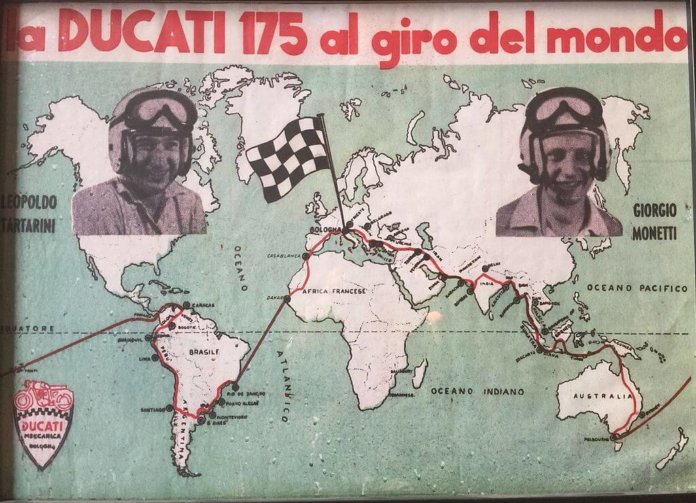
Some companies face adversity and figuratively rise from the ashes as a better and more successful operation. For the Ducati brothers in Bologna, Italy, their rise from the ashes was a bit more literal.
After their electronics and radio parts manufacturing plant was bombed by the Allies in WWII, the brothers had no to shift their focus to motorcycle manufacturing. What started as a small engine to fit onto any standard bicycle eventually grew into one of the top names in racing and performance motorcycle manufacturing in the world.
The Promise of Italian Radio
Antonio Ducati was an industrial engineer who moved to Bologna in the late 1800’s to seize the opportunities presented by the Italian Industrial Revolution. Antonio had three sons, Adriano, Marcello, and Bruno Cavalieri, who would all follow in his footsteps and follow their father in business.
After Adriano made a name for himself for his work on an early short-wave radio project in 1924, the four Ducati men decided to open an electronics and radio parts manufacturing operation. In July 1926, they officially opened the “Società Scientifica Radio Brevetti Ducati” (Ducati Scientific Radio Patent Company). At the time, broadcast radio was just beginning to take off and the Ducatis believed they could capitalize on this growing trend.
Their instincts proved correct. The business grew to the point where in 1935, the Ducatis began construction on a new and significantly larger manufacturing plant in the Borgo Panigale area of the city. By the outbreak of WWII, the Ducati plant employed more than 5,000 people, making it one of the biggest manufacturing operations in all of Italy.
A New Direction
On October 12, 1944, an Allied bomb attack leveled the Ducati manufacturing plant and the family was forced to suspend all production at the facility for nearly a year. Around that same time, a mechanical engineer named Aldo Farinelli was busy developing a prototype for an auxiliary motor that could be mounted on a bicycle, which he named the Cucciolo, meaning “puppy”.
According to the Ducati website, “Farinelli’s design had a number of major advantages over the competition, above all its four-stroke cycle and two-speed gearing, which used the engine’s power to its fullest potential.”
When he struggled to find a manufacturer that could meet the sudden demand for the product, the Ducati brothers stepped in and took on the manufacturing of the Cucciolo. In time, they would devote all of their efforts to designing and producing motorcycles.
The Ducati Family Bows Out
Despite the success of the Cucciolo, the family was struggling to turn a profit in their post-war operations. By 1950, the Ducatis sold their manufacturing plant to the Italian government. The Ducati’s would all go their separate ways and into various fields at the time Ducati was expanding its motorcycle production operation.
In 1952, Ducati introduced the Cruiser, one of the very first Scooter models. At the time, the 175 cc engine with an electric starter and automatic transmission broke new ground in design and performance. Two years later, engineer Fabio Taglioni joined Ducati and quickly become a legend in the industry. Under his guidance, Ducati released the four-stroke Tourist 174 and Special and Sport models which surpassed existing standards for speed and handling.
Ducati Dominates The Racing World
By the 1970’s, Ducati entered the world racing circuit and won its first world title with the 1978 TT Formula 1 World Championship when Mike Hallwood rode the Ducati NCR 900 SS TT1. Tony Rutter would ride the Ducati 600 TT2 to consecutive victories in the same race from 1981 through 1984. Ducati bikes would find victories at the MotoGP World Championship, Superbike World Championship (SBK), Supersport World Championship, FIM Superstock 1000 Cup, British Superbike Championship, AMA Superbike Championship, and Australian Superbike Championship.
Over the years the company has changed hands several times and yet it has never lost the manufacturing excellence or brand appeal that the Ducati name came to symbolize.









